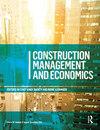考虑私营部门股东“投资者-承包商”双重角色下PPP项目的最优股权结构
IF 3.3
Q2 BUSINESS
引用次数: 2
摘要
本文章由计算机程序翻译,如有差异,请以英文原文为准。
Optimal equity structure of PPP projects when private-sector shareholders’ “investor-contractor” dual roles is considered
Abstract More often than not, in typical public-private partnership (PPP) projects, the construction contractor (CC) and operating contractor (OC) serve as shareholders simultaneously. CC and OC shareholders have different payback periods and paths, which may result in opportunistic risk. Therefore, an optimal equity structure is required to lower this risk. Based on cooperative game theory, a game model was developed to determine the optimal equity structure between CC and OC. The findings indicate that when the relative complexity of PPP project construction is higher than that of operation, CC should be given a higher equity ratio. Conversely, when the relative complexity of PPP project operation is higher, OC should be given a higher equity ratio. When the construction and operation of the project are equally complex, allocating equity ratios according to market value can reduce transaction costs, based on transaction cost theory. The findings also suggest that increasing CC’s equity ratio can effectively motivate them to better complete the construction work in the long run when the benefits of construction quality are significant. As for OC, increasing bonuses is also an effective incentive method. These findings provide insights into the design of the equity structure of PPP projects to enhance their success.
求助全文
通过发布文献求助,成功后即可免费获取论文全文。
去求助
来源期刊

Construction Management and Economics
BUSINESS-
CiteScore
7.50
自引率
14.70%
发文量
58
期刊介绍:
Construction Management and Economics publishes high-quality original research concerning the management and economics of activity in the construction industry. Our concern is the production of the built environment. We seek to extend the concept of construction beyond on-site production to include a wide range of value-adding activities and involving coalitions of multiple actors, including clients and users, that evolve over time. We embrace the entire range of construction services provided by the architecture/engineering/construction sector, including design, procurement and through-life management. We welcome papers that demonstrate how the range of diverse academic and professional disciplines enable robust and novel theoretical, methodological and/or empirical insights into the world of construction. Ultimately, our aim is to inform and advance academic debates in the various disciplines that converge on the construction sector as a topic of research. While we expect papers to have strong theoretical positioning, we also seek contributions that offer critical, reflexive accounts on practice. Construction Management & Economics now publishes the following article types: -Research Papers -Notes - offering a comment on a previously published paper or report a new idea, empirical finding or approach. -Book Reviews -Letters - terse, scholarly comments on any aspect of interest to our readership. Commentaries -Obituaries - welcome in relation to significant figures in our field.
 求助内容:
求助内容: 应助结果提醒方式:
应助结果提醒方式:


